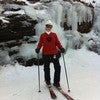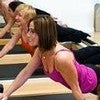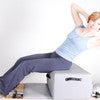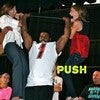Description
About This Video
Transcript
Read Full Transcript
This evening I'm going to demonstrate a reformer workout in the classical method with focus on the transitions because I've had a lot of people are used to working with other equipment or other systems. Get a little confused about what to do where and when, and I thought it would be interesting to go over this. Also as a teacher, I do always train my students to learn how to set up and break down the equipment themselves because the transitions are considered part of the method and also it speeds up the materials. So at advanced level you're looking at economy of movement, minimum movement and quick transition so you can get more done in the hours. So I'll just focus on that. Not maximum repetition, but just the transitions so that it can be recorded.
So always equipment scan from the back to the front. As I'm starting with footwork, head yeses up straps are in place. I'll be working on three springs and foot bar is are sitting down quite close to the front with the bottom. So one butt cheek is are on and one is off. So when I lie back, I'm already right in place with minimal shifting of the body. And then traditionally we would be doing 10 repetitions of toes, 10 repetitions of bird on a perch, and 10 repetitions with heels moving back down to toes for tendon stretches.
So again, moving down and up, there's variables on speed and tension, which is not part of the transition. So handles should be in place with the grads equipment you flip the foot bar. So I'm not even sitting up and I'm ready for my hundreds going into position and working on the pumps and coming back down. Here's the next transition handles in one hand this hand is down to help me swivel up. Knees always stay together and I'm releasing spring and coming back down.
So in the classical method, we never straddled the machine or we'd, we'd get ostracized by our teachers. So head rest comes down. Overhead is next. It would be either short spine or overhead, so arms down and rolling up and coming down. So whichever number of repetitions the sequence would have and coming right into coordination. So everything set to go. Tension of the springs is set. I'm finished. Next one is rowing the handles with one hand sitting up, I'm releasing a spring. You can keep your feet in the air if you want to.
On the grots equipment, all the spring tensions are the same, so it really doesn't matter which spring you use. And I measure one hand's width so the sacrum can be supported and I go right into the rowing, arms out, pressing down, big circle. Everything stays the same. You do with the three repetitions and nick one is long flat back,
So reaching from the shoulders. The next variation you do three of these, reaching from the hips, doing three repetitions of these, then shaving and nothing changes. And actually from here I [inaudible] with the grass. All I do is I flip around. So it's a nice old fashioned transition because everything's on swivels, moving back and forth into shaving the back of the head, crossing the feet and hug a tree.
So after rowing I would make sure the handles are hooked back. By the way, on a grots we have these tiny little hooks and you can put the on a lot of them, they won't fit this way, so you'll hook them sideways, step off and set myself up for long box after doing swan on the ladder barrel. So long box length wise, I'm checking that I'm still on one spring, standing up on the foot bar, walking my hands out to the front of the box, pressing the carriage out and lowering down to my shoulders up flush with the edge of the box, making sure the straps are tonged, lifting my feet up off the foot bar and then allowing the machine to come in. So I'm ready to go. I have tension on the strap, but the machine is, is in. So from here pulling on the straps and on the grants we have lots of noise, which is totally fine.
And then t shape sliding down to the edge so you either can hold or you hold the s the hook part, pulling back again and then holding the handles with one hand, stepping off, adding a spring and making sure the handles are set behind my back. Tricky transition. One foot comes to the front and I aim my hips as far to the front as I possibly can so that as a lie back, I'm right in position with my body. Hands are right over the face, so back stroke with whatever variations that going on with it and then setting up for teasers. So one hand sitting back up, releasing a spring and sliding back down with the hips quite close to the front and letting the arms stretch as low down to the floor as they will go to open up the shoulder cuffs coming into teaser, whatever variations are going on with teaser or being done. There's a lot of different variations and rolling back down to this as the end of teaser, upholding the handles with one hand stepping off and breaststroke is next advanced breaststroke. You need somebody to spot you.
But if you're doing beginner version, again, I have the handles in front of me, thumbs hooked, pulling. So the machine has to move out and then setting myself up to my kneecaps are right over the edge of the box and lying down on my stomach. And then starting breaststroke. And again, if there was somebody spotting me, they would be helping me from the back holding the box to finish, stepping off, letting the machine come in, shifting the handles behind and sitting up in the middle of the box ready for horseback. So all the horseback variations, whatever they are and sitting back down. So this is long box variation, finishing cooking the handles and taking the box off. Next setup is long stretch series.
So starting from the back headrest is up to spring's foot. Bar is up, shoulders over the foot, bar, foot, foot, long stretch series, long stretch, pushing out an inn down, stretch up, stretch, adjusting the feet.
There's different positions depending upon which choice of choreography we're working with. So starting out with round back,
Or if you're doing the more advanced variation just to the side you step and you go right into the movement. So you place your foot between the two springs, place your hands and kick right into the variation and variation. The other side, same thing. So you go right into it.
Flip to the side and back inside. So challenging choreography, stepping off, stepping off. I worked hard. So now the next thing would be shirts to massage. As we're doing the more complex advanced workout shirts, spinal charge would come here. So football comes down,
This is where people really get fuddled up with a grads machine. You need to like let the strap slide through and you slip it through the handle. So one, one, so they're right here and then the machine should not move. You need to be able to lift the hips up and get your feet in the straps and then you're ready for short spine. So extending out, lifting,
And again, I'm making sure the leather is in the middle of the well and hooking, setting my feet right up four semi circles. So rolling down into the spring, pressing halfway out, rolling up and coming in and reversing it. So you do three variations of each, having a nice stretch at the end, lowering the heels and another stretch wiggling back. Not a graceful transition with sticky skin, but that's one of the few. And then I check, I'm still have the two springs on.
I'm ready for chest expansion. So taking the handles coming right into a kneeling position, holding the leathers, I moved the handles forward. Nice lifted chest, pulling back, reversing it, doing as many variations as appropriate, and then sitting down, adding a spring and moving my knees forward with I stretch. So again, very movements. The whole beauty of the transitions is how efficient and economical they are. So hips up forward and just stretching the thighs out and going a little deeper and then taking it into the back bend if you want. I'm coming back up, hooking the handles, lifting the foot bar back up, releasing spring again and then going into the backbends. So from here,
So sitting down, I'm releasing a spring, stepping off, coming back on one hand and the other hand and I'm ready for my arms circles, just working the arms. So three variations, one direction, three variations, the other. So again, I'm not doing floor repetitions because the focus today is just on getting the sequencing rights is sitting back down, hooking the handles and stepping off for short box. So headrest is down
Traditionally this was because just in case one strap broke, there'd still be another one to protect you from falling backwards. So we always work with two straps. So round back would be first and going all the way back, whichever sequence, whatever choreography the student is doing. Nice little stretch, flat back, long spine and every time in between, little stretch side to side, opening up the ribs, working the obliques and a little stretch. And then every time checking by the way that where you sit on the box is one hands with from the edge because the is as you roll back, you want your sacrum nicely supported. So with a very short person, we move the box in front of the shoulder rest so that the short person will have a proper support for their back.
Otherwise short person would be way forward of the box. Going into twist, working out with the spine, twist and stretch and going into one tree and all the different variations that are available with the tree and coming back up and doing a nice stretch at the end for the hips with the foot band, if you working with the bent foot, if you notice I'm keeping my toes in the strap so that when I'm ready to do it, I don't need the teacher to get my foot back in. The strap will need me to get off. So again, everything is really carefully thought out so that you can be completely independent. Your time is not being wasted on the transitions and there's a complete connection between all the exercises. So they actually make a lot of sense as far as what's happening.
It's really becomes like poetry in motion and it's lovely to watch an intermediate or advanced practitioner doing their workout because they never stopped moving. And even putting the equipment on or off is organized, efficient and beautiful to walk because of the mastery that exists within the body. So side bends.
So this goes off, headdress comes back up.
Lower wage. I personally loud cause we basically work your abs. So football comes back up. Step step, set up my springs to three or four springs. Sit Back Down, close to the front, lie back down in my back and I'm ready for running or so. Nice. Work into the ankle. Work, come back in. Pelvic lift again out in n rolling back down.
So my next sequence is really a s a series that's often done by men more often than women. It's the balance control series. I'm doing balanced control front. I am putting myself on one spring. Often this is done on two springs, but this piece of equipment is just too tight for my body. So sometimes I'll go off of the classical measurements so that it actually works. So stepping straight up on the foot bar, coming out to plank position, bringing the machine out in in. Sometimes people do pushups here, lifting the hips, stepping right down, turning around one my hands go on the shoulder rests feet and pressing out balance control back.
I always took me a while to figure out these names. It's like your back is to the floor, your front is to the floor, and sometimes people do dips here, stepping down, going into balance control side or star variations, very important. The setup of the foot, the little toe has to be grounded so the foot actually will feel like it's standing on the floor. So your nice long plank position and all the different variations that are done here. Whoops, very good. Stepping straight down, walking around to the other side. Hand is at the front of the foot bar. The foot is at the back, so it's unlike map, we're put, the legs are in front and the body is behind here with the opposite.
Very important to keep the hip up so the whole body works like one piece stepping down. And now we go into the split series. So split series is done, two springs, sometimes one spring. So we start out with side split. So again, I just took one foot down, two feet out to the floor. I didn't even move my feet. Foot bar comes down, I step right onto the platform and then I move this foot out. So always you set up stable structure, moving structures.
So you'll have a place that you're grounded from for the split series. So you do your sequence on two springs. If you're strong and you want to work deeper, you can go into the one spring doing usually three repetitions and there's a lot of variations from there. Now finished, bring this foot closer in. So I'm nice and steady step on the platform, step down. I'm never in a place where I'm insecure. Added a spring, walk around and check and do the same sequence on the other side.
So stepping up one foot on the stable structure, walking this foot out, doing the repetitions, moving into one spring
Very important in thigh stretch. It's not about stretching this front leg, it's about getting the hips as low down. So you really look into sticky, both knees bent and then whatever variations that stretch you have afterwards. So I stepping off, stepping back on right foot forward, left foot is back 90 degree angle going constantly. The big thing is not going up with the hips, but keeping the hips moving back and forward. Coming up the Russian dancer, Hands Back Down, lifting the back, heel adjusting. So the lake comes to parallel going into the thigh stretch.
So you're working the hip flexor and the front of the sigh. You really preparing the legs for the deeper stretches of the prescriptive to gradual progression of intensity. Stepping off, stepping back on, so I stepped off, stepped back on one foot, the other foot goes right on the foot bar and then I hopped this foot forward onto the head rest, square the hips and go as deep out. So here really flexible people go beyond splits already because both legs are straight. You keep the hips really low for the first part of Russian split. Keep the hips the slow for the second part.
So now we're challenging both flexibility and strength. Going as far out as you can. Bringing the carriage up, hopping the foot back, changing sides, squaring the hips, going as far out as you can. Back leg has to be really straight, keeping the hips low. The whole trickier is how low can you get your hips to be coming up.
Now depending upon how the hips are, some people will adjust the back foot. I will adjust the front foot so you can get into this full split and really get a maximum stretch happening for you so people can go all the way down to the bottom, come back up, bring the foot in, change sides. So again, I'm getting the foot behind, lifting up, squaring hips and chest, going down and up. Lot of work now in the thighs to keep the carriage steady and then I'm adjusting my best foot. That's individual adjusting the front foot so I can get into this deep, deep, deep stretch. Come back up and hop the foot forward. Step down, little transition. Not Everybody's that flexible. So some people on the transition out of here will actually bend the knee, then the knee, and then step off the machine so that they're nice and stable with it.
And by the time you've gone through all of this, you've had a great workout. So I know this was more educational in nature tonight. It's not exactly a workout, but it's a reference point for those teachers and students that really want to see how the material flows from one transition to the other. And we usually don't discuss transitions. So I hope you enjoyed it. Thank you.
Comments
Regarding the transitions - these can only be done on a Gratz style reformer as the other styles are at times structured differently. Foot bar has to be moved manually, etc. Anyhow, no matter what machine you are on - you can do the exercises. Enjoy,
You need to be a subscriber to post a comment.
Please Log In or Create an Account to start your free trial.




















